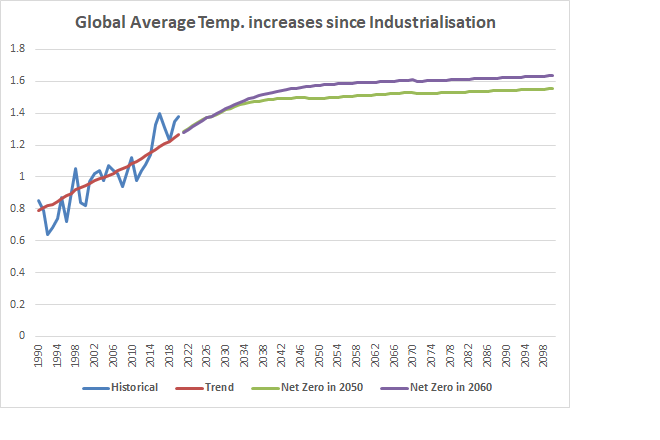Electricity demand could be too high at present as China and India increase coal-fired generation and because of the push to cut CO2 emissions from passenger cars.
Expected Electricity demand in 2021 and 2022
The IEA expects that global electricity demand will grow faster than renewables can keep up in 2021. Even though generation from renewables like hydropower, wind and solar is due to grow 8% in 2021 and by more than 6% in 2022, it will only be able to meet about half the projected increase in global electricity demand. The rest will be met mostly by thermal plans that burn fossil fuels, especially coal.
Furthermore, IEA expects most of this extra demand will come from China and India.
China is pushing hard to increase electricity demand and supply
It is well known that China is increasing its coal-fired generation capacity. A generous explanation is that China could be using this as an opportunity to provide back-up generation power once its intermittent renewable capacity can provide most of its demand needs. Backup capacity is needed once any system goes to 100% renewables during ordinary operations. This is because all intermittent supplies can fail and these failures can spread over an extended period. Storage can meet many of these shortfalls in supply, but there is a point where storage will not be sufficient. It is at this point that it coal and gas-fired generation will be required. It is only prudent to provide for this capacity.
India is massively electricity poor.
No-one can seriously complain about India increasing its coal-fired generation. In 2016 it was running at about 2 tonnes per person CO2. China was running at about 7 tonnes per person and USA was running at 15.5 tonnes per person. However, once it has properly addressed this issue, it should eventually aim for 100% renewables during ordinary operations. Then it will need backup generation capacity which can be supplied by periodic running of its legacy installation of its fossil-fuel generators.
OECD nations need to cut fossil-fuel generated electricity
Without cutting greenhouse gas emissions the global average temperature will continue to increase. A cut in the level of emissions can be achieved, and this should result in global average temperature being held at 1.5C above pre-industrial levels. It will still bump above this, but will also fall below, as has happened in March 2021, which is 0.33C below March last year.

It is a reasonable target for every nation that can do it (i.e. the OECD nations) to run electricity generation on 100% renewables during ordinary operations by 2030. It could keep its remaining coal and gas-fired generation to be only used to provide backup capacity. If this is done, it will assist in levelling this curve much earlier than 2030 and give the world more time to solve the intractable problems with steel, cement and building heating.
The way this could work is for coal and gas-fired generation to be removed from directly supplying the grid. This capacity then can be used to renew storage of electricity. It only needs to run when storage capacity is seriously depleted, but during that time it can be run at 100% of capacity 24 hours a day, seven days a week. This will minimise the CO2 emissions from this process and hold costs down as much as possible.
The push for fully electric vehicles could be counter-productive
It a nation does not have enough renewable electricity generation to fully supply the grid, it should consider very carefully whether fully-electric vehicles are as CO2 free as is often claimed. If additional fossil-fuel is used in generating electricity as a result of the widespread introduction of fully-electric vehicle, there may be no actual cut in the CO2 emissions for that country as a result of this policy.
It should be noted that non-plug in hybrids can cut fossil-fuel usage by almost 50%. Each country should to take this in account.
